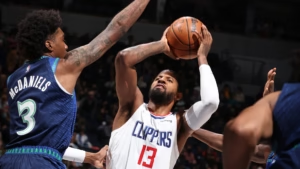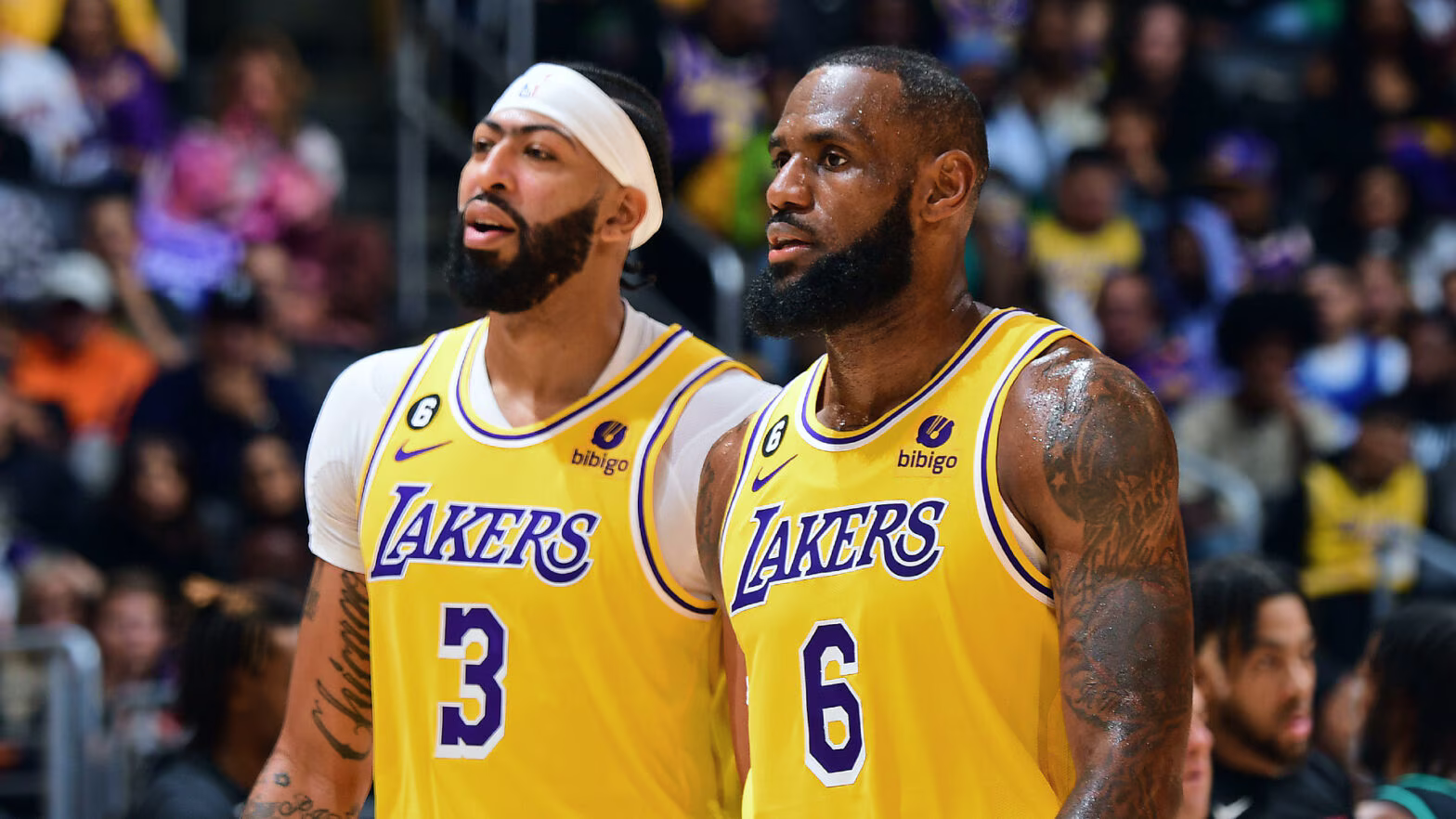Timberwolves vs LA Clippers Match Player Stats: A Detailed Analysis
Introduction to the Timberwolves vs LA Clippers Match
timberwolves vs la clippers match player stats The upcoming match between the Minnesota Timberwolves and the Los Angeles Clippers holds significant importance within the context of the ongoing NBA season. Both teams are not only vying for playoff positions but also looking to solidify their standings in their respective conferences. As the season progresses, every game becomes crucial for teams competing in a tightly contested landscape, and this matchup is no exception.
Currently, the Timberwolves are experiencing a resurgence, with key players performing at a high level. Their performance as a team reflects a strategic improvement, focusing on both offense and defense. On the other hand, the Clippers have faced challenges throughout the season, but their roster boasts several high-caliber players known for their potential to make pivotal contributions. This clash presents a unique opportunity for both teams to showcase their talents.
Fans can anticipate an exhilarating showdown, characterized by intense competition and individual brilliance. The Timberwolves vs LA Clippers match player stats will play a crucial role in determining the outcome. Players such as Karl-Anthony Towns and Anthony Edwards from the Timberwolves, along with Kawhi Leonard and Paul George from the Clippers, are expected to be the focal points of their respective teams’ strategies. Their performances will directly influence the dynamics of the game, potentially tipping the scales in favor of one team.
In addition to the key players, historical encounters between these two franchises have often featured dramatic turns and close contests, highlighting the rivalry that has developed over the years. The nuances of past matchups can provide insight into what fans may expect when these teams collide on the court. This analysis will set the groundwork for examining player statistics in detail, shedding light on how individual performances can impact the overall game results.
Key Player Statistics Overview
The recent match between the Timberwolves and the LA Clippers revealed significant insights through player statistics that played a crucial role in determining the outcome of the game. For the Timberwolves, standout performances came from key players whose metrics were influential in shaping both offensive and defensive strategies. One notable player, who contributed heavily, logged an impressive total of points scored, along with a remarkable number of rebounds and assists. This statline highlighted his dual impact on offensive execution and defensive positioning.
Simultaneously, the LA Clippers also showcased impressive individual performances. One player, in particular, recorded high points scored along with several steals and blocks, demonstrating his versatility and defensive prowess. The interplay between these statistics is vital; for instance, high points scored can lead to more strategic plays by opposing teams, impacting overall team performance. Analyzing metrics such as assists reveals how effectively players capitalized on scoring opportunities, showcasing teamwork and collaboration on the court.
Furthermore, both teams’ rebound statistics provided insights into possession control, crucial for dictate pace and rhythm in the game. Graphical representations of these stats underscore key comparisons, illustrating trends such as dominance in specific quarters or changes in player performance under varying game conditions. The analysis of steals and blocks also indicates defensive effectiveness, showcasing which player consistently disrupted the opponent’s plays. The Timberwolves vs LA Clippers match was ultimately a testament to how individual performance metrics significantly contribute to the collective efforts of a team, affecting the final result of the showdown.

Comparative Analysis of Both Teams’ Player Performances
In the recent matchup between the Timberwolves and the LA Clippers, player performances were instrumental in determining the outcome of the game. A thorough analysis reveals how each team’s key players measured up against each other, shedding light on efficiency ratings, shooting percentages, and contributions on the defensive end. The Timberwolves showcased standout performances, particularly from their star player, whose shooting proficiency and ability to facilitate offense made a significant impact. His field goal percentage of over 50% highlighted his efficiency, particularly in high-pressure situations, as he routinely converted opportunities near the basket.
Conversely, the LA Clippers relied heavily on their primary scorers to drive their offense. Notably, one of their leading players maintained an impressive 40% shooting from three-point range, providing the team with much-needed perimeter scoring. His contributions not only kept the scoring competitive but also stretched the Timberwolves’ defense, opening driving lanes for other teammates. Examining the box score reveals the Clippers’ strategy to exploit mismatches, frequently isolating their wing players against defenders less equipped to handle their speed and agility.
Defensively, both teams had their strengths. The Timberwolves’ big men demonstrated formidable rim protection, reflected in their combined block totals for the game. This defensive prowess limited the Clippers’ effectiveness inside the paint, forcing reliance on outside shooting. Additionally, the turnovers forced by the Timberwolves’ guards created opportunities in transition, which proved vital in keeping the pace of the game favorable for them. Conversely, the Clippers emphasized defensive schemes aimed at neutralizing the Timberwolves’ key scorers, showcasing an adaptive approach to player matchups.
Ultimately, the comparison of player stats from the Timberwolves vs LA Clippers match emphasizes the multifaceted nature of basketball, where individual performances, team strategies, and adjustments play crucial roles in shaping the game’s outcome.
Conclusion and Implications of Player Stats on Future Matches
Examining the player statistics from the Timberwolves vs LA Clippers match reveals critical insights that extend beyond the game itself. The performances recorded during this encounter can serve as a benchmark for future matchups, highlighting both strengths and weaknesses exhibited by each team. For instance, the individual stats indicate which players consistently performed well under pressure and which struggled to meet expectations. Such data is essential for coaching staff when evaluating player effectiveness and determining optimal lineups for future games.
Moreover, the Timberwolves’ ability to adapt their strategy in response to the Clippers’ approach is evidenced through their player performances. This adaptability is crucial as teams prepare for subsequent matchups, where opponent analysis and tailored strategies can make a substantial difference. The statistics not only reflect past efforts but also inform future planning. Coaches can leverage these insights to adjust training regimens, game rotations, and overall team dynamics.
timberwolves vs la clippers match player stats Additionally, if certain players showcased specific skills or patterns that were successful during the Timberwolves vs LA Clippers match, teams would likely look to exploit these trends in their upcoming contests. The match’s player stats suggest potential areas for both teams to enhance their game strategies, whether focusing on offensive execution, defensive schemes, or player rotations. Ultimately, the implications of player statistics extend to player morale and confidence, elements vital to sustaining long-term performance throughout the season.
In conclusion, the analysis of player statistics from the Timberwolves vs LA Clippers match sets the stage for future expectations. Both teams can build on their performances, making strategic modifications based on the data to improve their chances of success in subsequent games. Careful consideration of these stats will undoubtedly play a pivotal role in shaping team trajectories in the competitive landscape of the NBA.


Post Comment